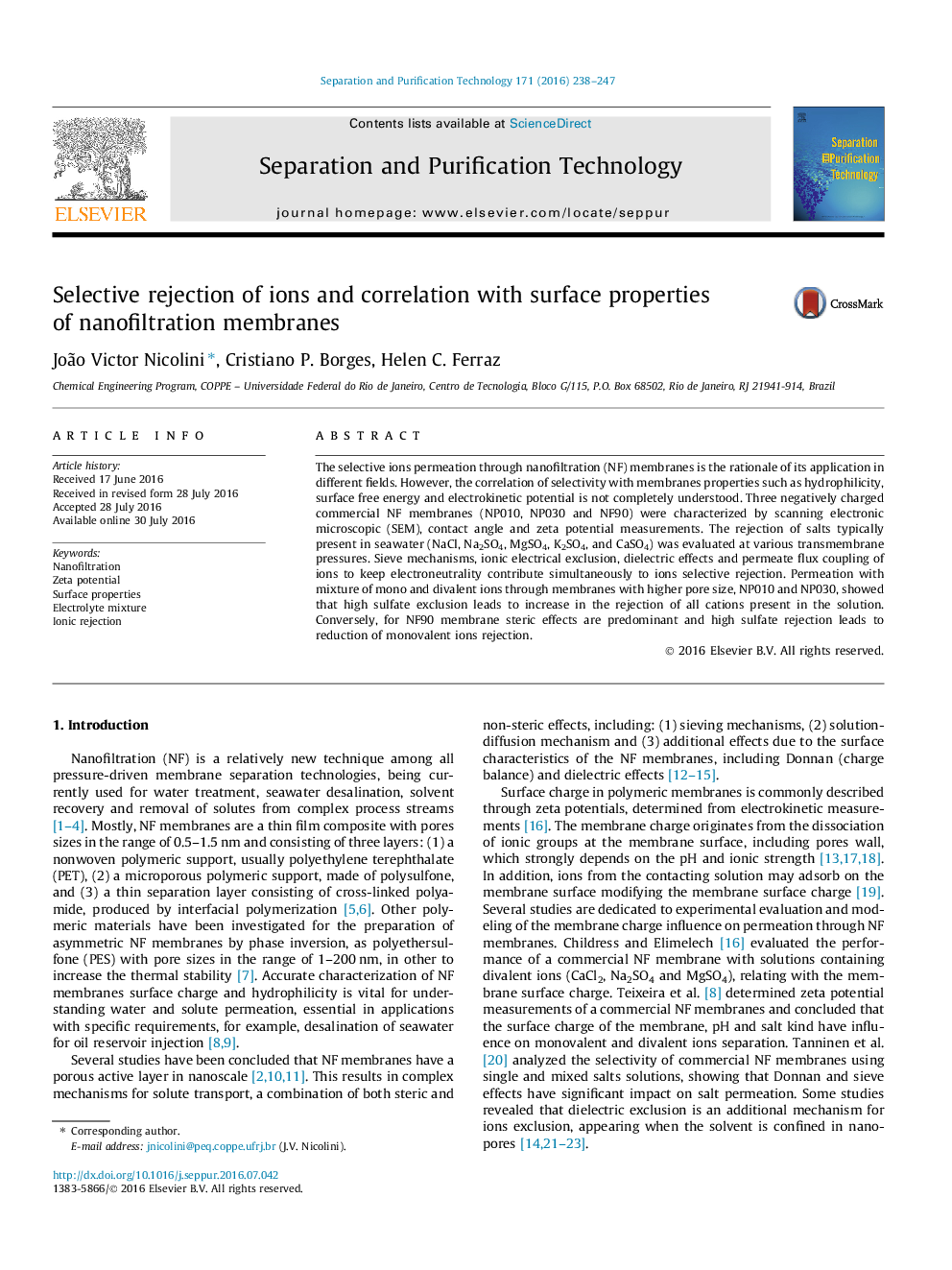| Article ID | Journal | Published Year | Pages | File Type |
|---|---|---|---|---|
| 639789 | Separation and Purification Technology | 2016 | 10 Pages |
•The paper reports the study of separation mechanisms of nanofiltration membranes.•The relationships between surface features and ionic rejections were analyzed.•Differences in rejections can be explained by sieve, electrical and dielectric effects.
The selective ions permeation through nanofiltration (NF) membranes is the rationale of its application in different fields. However, the correlation of selectivity with membranes properties such as hydrophilicity, surface free energy and electrokinetic potential is not completely understood. Three negatively charged commercial NF membranes (NP010, NP030 and NF90) were characterized by scanning electronic microscopic (SEM), contact angle and zeta potential measurements. The rejection of salts typically present in seawater (NaCl, Na2SO4, MgSO4, K2SO4, and CaSO4) was evaluated at various transmembrane pressures. Sieve mechanisms, ionic electrical exclusion, dielectric effects and permeate flux coupling of ions to keep electroneutrality contribute simultaneously to ions selective rejection. Permeation with mixture of mono and divalent ions through membranes with higher pore size, NP010 and NP030, showed that high sulfate exclusion leads to increase in the rejection of all cations present in the solution. Conversely, for NF90 membrane steric effects are predominant and high sulfate rejection leads to reduction of monovalent ions rejection.
Graphical abstractFigure optionsDownload full-size imageDownload as PowerPoint slide
